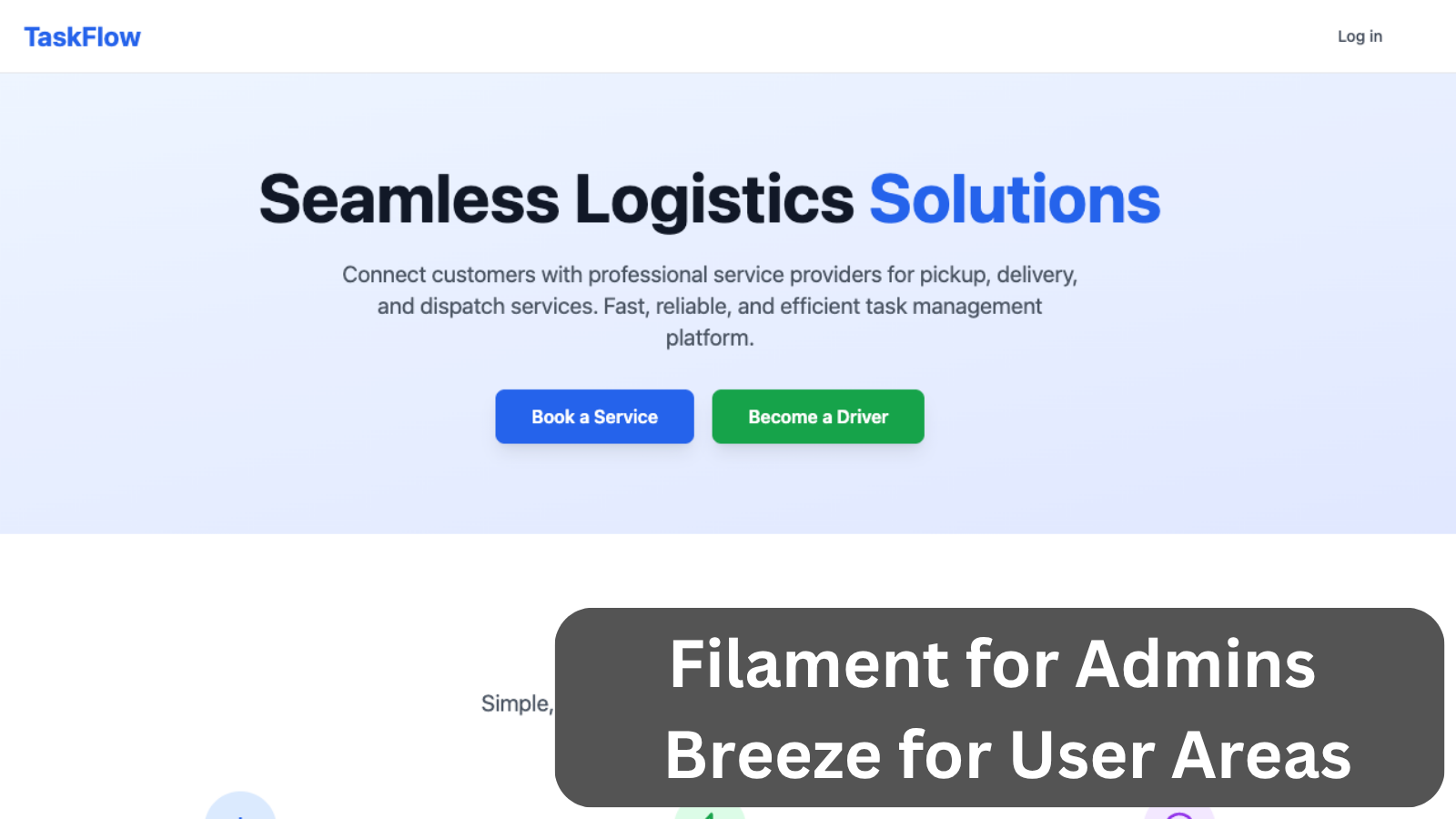Tasks and Delivery System: Filament (v4) + Laravel Breeze version
Filament 4Your application might require adding Filament and your existing Laravel Breeze (or any other stack) application. In this example, we will show you how it's done and how you can have a single login page for all of them.

Get the Source Code:
How it works
Let's start with the Filament Admin panel:
app/Providers/Filament/AdminPanelProvider.php
class AdminPanelProvider extends PanelProvider{ public function panel(Panel $panel): Panel { return $panel ->default() ->id('admin') ->path('admin') // ... }}In this panel, we will have 2 CRUDs:
- User management
- Task management
app/Filament/Resources/Users/UserResource.php
class UserResource extends Resource{ protected static ?string $model = User::class; protected static string|BackedEnum|null $navigationIcon = 'heroicon-o-users'; protected static ?int $navigationSort = 1; protected static ?string $recordTitleAttribute = 'name'; public static function form(Schema $schema): Schema { return UserForm::configure($schema); } public static function infolist(Schema $schema): Schema { return UserInfolist::configure($schema); } public static function table(Table $table): Table { return UsersTable::configure($table); } public static function getRelations(): array { return [ // ]; } public static function getPages(): array { return [ 'index' => ListUsers::route('/'), 'create' => CreateUser::route('/create'), 'view' => ViewUser::route('/{record}'), 'edit' => EditUser::route('/{record}/edit'), ]; } public static function getGloballySearchableAttributes(): array { return ['name', 'email']; } public static function getGlobalSearchResultDetails(Model $record): array { return [ 'Email' => $record->email, 'Role' => $record->role?->name, ]; } public static function getEloquentQuery(): Builder { return parent::getEloquentQuery()->with(['role', 'driver']); }}As you can see, we have not defined our Form or Table yet. In Filament v4, we define them as a separate file:
app/Filament/Resources/Users/Schemas/UserForm.php
class UserForm{ public static function configure(Schema $schema): Schema { return $schema ->components([ Section::make('User Information') ->schema([ TextInput::make('name') ->required() ->maxLength(255), TextInput::make('email') ->email() ->required() ->unique(ignoreRecord: true) ->maxLength(255), // ...}Next, we will create:
- Single Login page for Filament panel (Admins), Customer and Driver pages
- Breeze Customer Task management
- Breeze Driver Task management
- Notifications to Customer about Task status changes
The FULL tutorial is available after the purchase: in the Readme file of the official
repository you would get invited to.
Get the Source Code: All 154 Premium Examples for $99